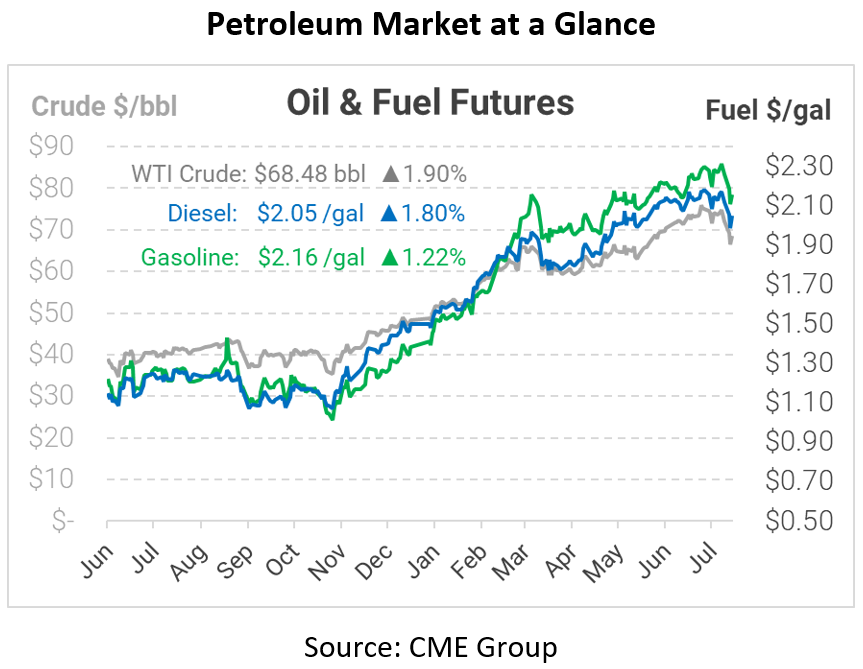
Driver Shortage Reaches Emergency Level in Some Areas
The fuel driver shortage continues to deepen as high summer demand keeps markets stretched thin. Yesterday, the State of South Dakota – far removed from the normal threats of hurricanes and refinery outages – declared a state of emergency for petroleum deliveries. South Dakota Governor Noem waived federal hours of service requirements for fuel truck drivers in the state, overriding federal laws. The FMCSA commented that the decision is legal, given the emergency declaration. The ruling does require that petroleum companies allow “fatigued drivers” to rest, in order to prevent accidents.
As we noted in a recent article, “Why Everything is Getting More Expensive,” the driver shortage has been an ongoing challenge in the US and around the world. Fuel markets are particularly constrained, since driving a fuel truck requires special hazmat certifications and entails more risk. To meet the labor shortage, trucking companies have had to significantly increase driver pay, from sign-on bonuses to higher salaries to added incentives. After years of relatively stable freight rates, fuel trucking costs are climbing quickly, causing many national fuel carriers to hike rates. As quickly as rates are rising, driver wages are growing even faster, so companies are constantly adjusting rates just to keep up.
South Dakota is the first state to declare a state of emergency due solely to the driver shortage – not paired with a hurricane or pipeline issue. However, it may not be the last. States like Florida, California, Ohio, and many others are facing tight freight markets, so their governors could decide to follow in South Dakota’s footsteps. The waiver will bring some flexibility, allowing each driver to take an extra load or two per day if they’re not fatigued.
Loosening restrictions is helpful, but it’s no panacea. The National Tank Truck Carriers (NTTC) expects that 25% of fuel trucks will sit idle this summer, so loosening hours may not be enough. The driver shortage will only be filled by enticing more drivers into the industry, generally through better wages and improved working conditions. For that reason, even if states follow South Dakota’s example, fuel trucking capacity could still be in for a tough summer.
This article is part of Daily Market News & Insights
Tagged: driver shortage, south dakota, states of emergency
MARKET CONDITION REPORT - DISCLAIMER
The information contained herein is derived from sources believed to be reliable; however, this information is not guaranteed as to its accuracy or completeness. Furthermore, no responsibility is assumed for use of this material and no express or implied warranties or guarantees are made. This material and any view or comment expressed herein are provided for informational purposes only and should not be construed in any way as an inducement or recommendation to buy or sell products, commodity futures or options contracts.






